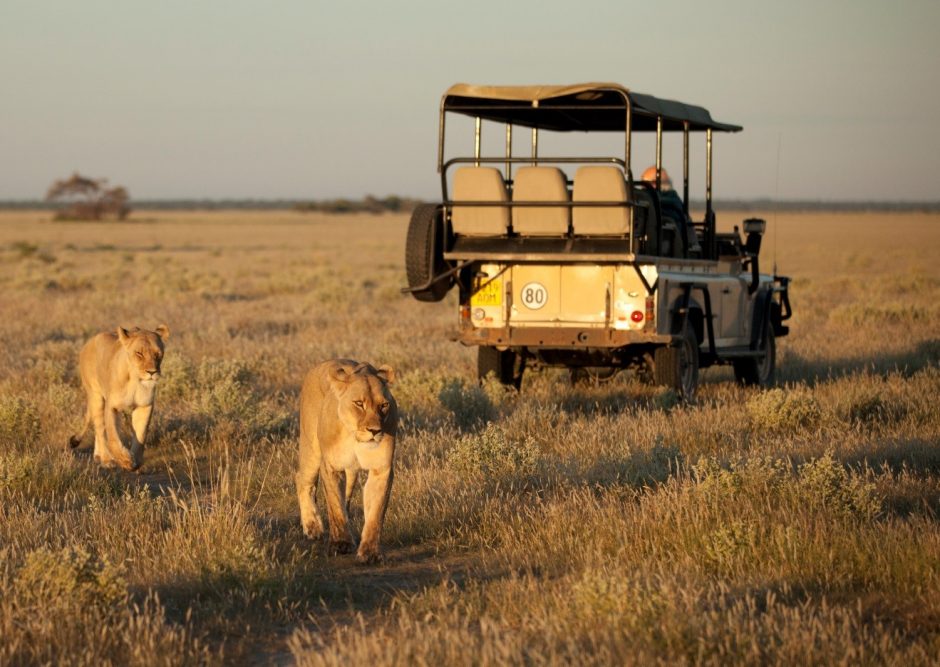
What’s in the Camera Bag – Africa Photo Safari Edition
It doesn’t get much better than a quintessential African safari for wildlife photography. Whether it’s iconic East African locations like Kenya’s Maasai Mara or Tanzania’s grand Serengeti National Park, or lesser-known treasures like Botswana’s Okavango Delta or Namibia’s great sand dune sea, you’re in for a treat. If you’re headed to any of these places, or others in Sub-Saharan Africa, be sure to take your choice camera gear with you, as it’s going to be the photo adventure of a lifetime.
Please note, photographic styles vary, as do conditions on the ground. While this is meant to be a guide for choosing your camera gear, you should consider your own photographic interests first and foremost.

Ultra wide angle vs. wide angle
You’ve got to bring a wide angle with you, but exactly how wide, and what sort of zoom range, is up for debate.
For me, I want to have something that’s decently wide, but also able to zoom in for those times when I may just not need my big telephoto. This may be helpful to compose the shot I’m seeing in my mind, or simply to magnify the landscape or wildlife I’m focusing on. My go-to is a 24-105mm full frame equivalent. If you’re shooting on a crop frame camera (e.g., Canon Rebels or Nikon’s 5000 or 7000 series), I’d stick with a trusty 18-55mm.
This is my “walking-around lens,” as it’s usually what I start each day with as I’m leaving my safari tent and heading to the vehicles for game drives.
However, there is indeed virtue in considering those lenses that are even wider than this, in the 16-35mm (full frame) or 10-22mm (crop frame) range. While these have their limitations with zoom, they can yield some really interesting perspectives when in tighter shots, like those inside safari vehicles, or inside your tent or camp communal areas. I don’t prioritize these lenses for classic wildlife shots, but they are superb for landscape and travel photography.
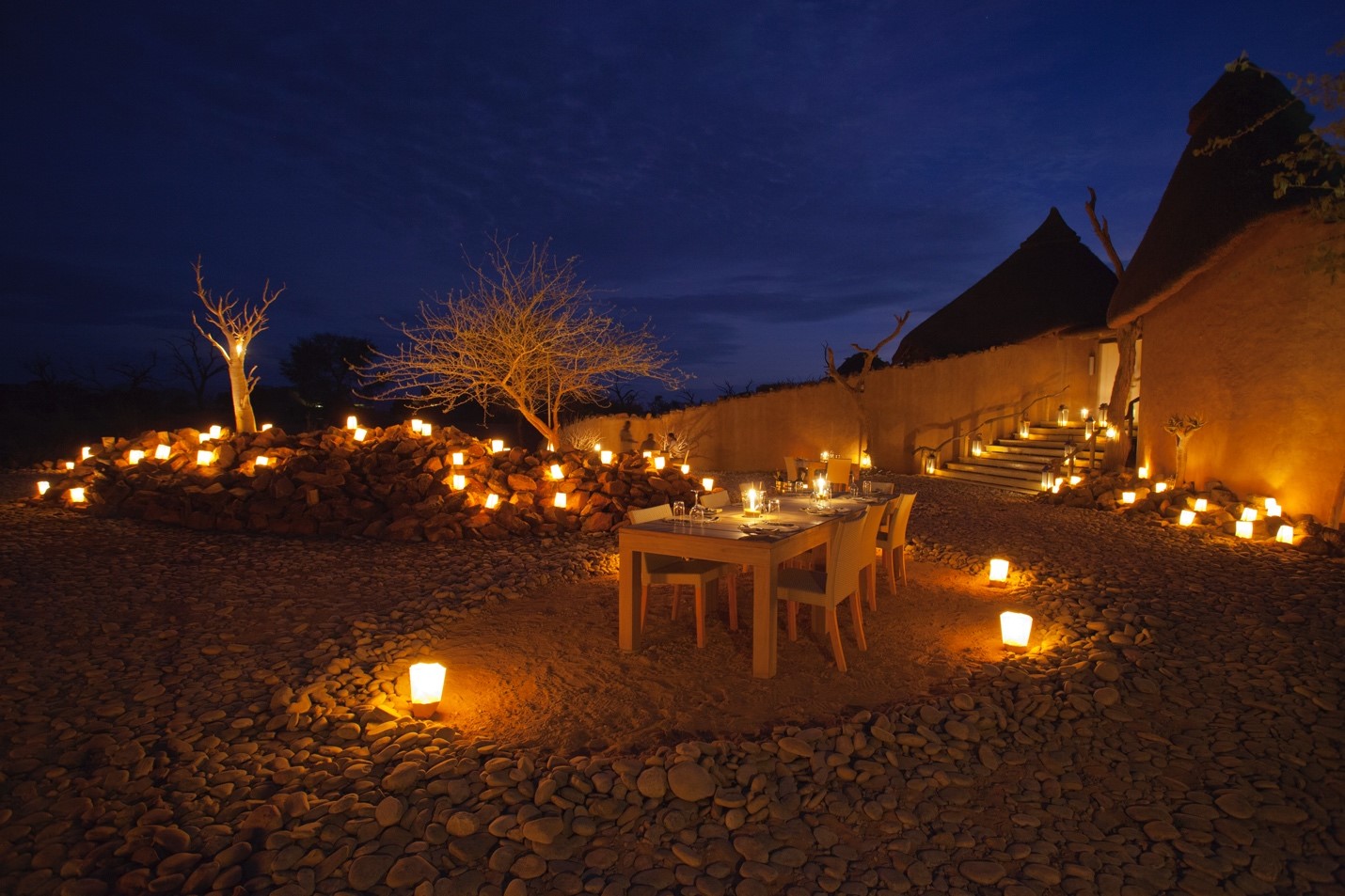
At the end of the day, I typically bring BOTH of these lenses—a general wide angle and a more specialized ultra wide angle—because of the amount of landscape and travel photography I’m personally into. And as you’ll see in the rest of the list, I really only bring one other lens (a big zoom telephoto), so my kit is still pared down quite nicely.
Zoom telephoto
Without a doubt, this is the most important lens to have with you on an African wildlife photo safari. This is what’s going to get the job done for the majority of your wildlife photos. I’m talking here about your classic 70-300mm and 100-400mm lenses (or 40-150mm and 300mm prime for mirrorless lenses).
I would say you’re likely to have this on your camera about 60%+ of the time.

There is a newly emerging range of lenses, made by some of the top camera and lens manufacturers, in the 150-600mm and 200-500mm ranges. To me, these are excellent choices, as you almost never have “enough” telephoto power when on a proper nature and wildlife safari. There will always be those shots and those times when you wish for a bit more. Thus, having a lens that can get you to the 500mm and 600mm distances without it looking like a bazooka or requiring a second mortgage is a godsend. The only downside of these is that you are usually stuck with an aperture in the f/6.3 range at the most telephoto, which isn’t all that stellar. However, because the open landscapes of Africa usually have a decent amount of light, it’s not as concerning as, say, using it in the deep jungles of Borneo or the Amazon rain forest.
Personally, I stick with my trusty 100-400mm, but I’m considering upping the ante to a 200-500mm one of these days!
Super telephoto
This is when we get into true “pro-level” lenses—those that are bazooka-esque in shape and size. I’m talking here about your big fixed/prime lenses that give you both superior telephoto range and extraordinary apertures. These are your 300mm, 400mm, 500mm and 600mm lenses that give you f/2.8, or f/4. This means that you can shoot FAST and in lower light than other lens options.
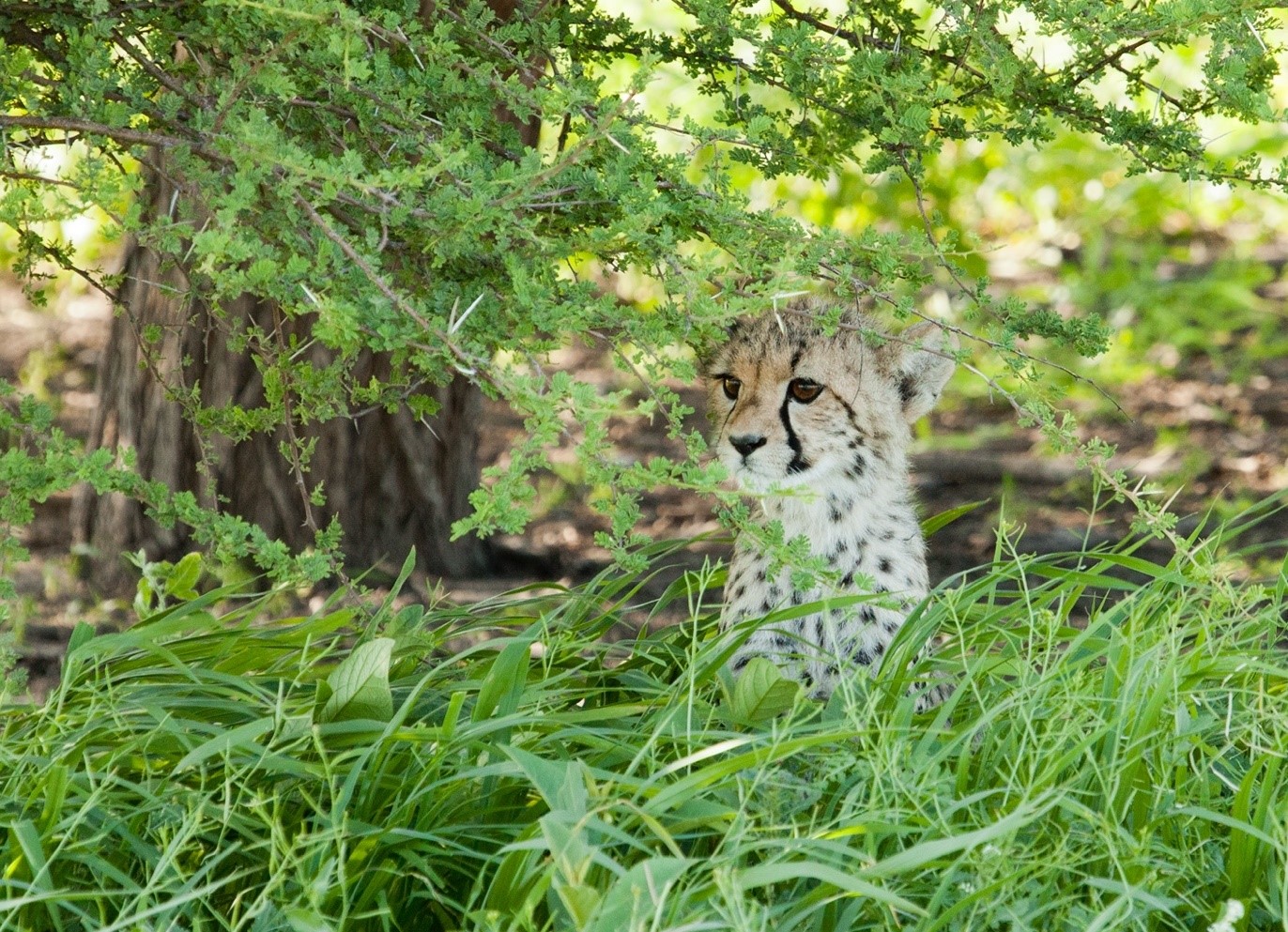
However, these do have the downside of being big, heavy and expensive.
If you don’t own one of these, I recommend you do a little homework on whether you really want to carry around something this large, and, if so, perhaps considering renting one for your trip. While their price tags usually are in the high four figures—or sometimes even more than $10,000 per lens!—you can rent one for two to three weeks for about $800 to $1,000. Although this means you don’t get to keep the lens forever, you do get to keep the stunning photos it produces.
Simply put, these are typically the highest quality, best lenses you can bring on an African safari, but unless someone asks me specifically about these, I don’t recommend them right off the bat, as they are indeed pro-level.
A second camera body?
If this is shocking to you—to see me recommend a second camera body—don’t over think it. One camera body is absolutely fine. It’s not necessary. However, if you’re the kind of person already asking this question in your head, then I’ll recommend you go through with it and bring that second body.
The advantages are simple: You can now use two different lenses without having to spend time changing them out, therefore giving yourself time to take more shots. It also gives you more ability to take spur-of-the-moment, opportunistic, fleeting photos. For the wildlife photographer, this is a golden opportunity. And finally, it keeps your camera sensors cleaner; since you aren’t changing lenses as often, you aren’t opening your camera sensor up to the ever-present dust we experience while on safari.
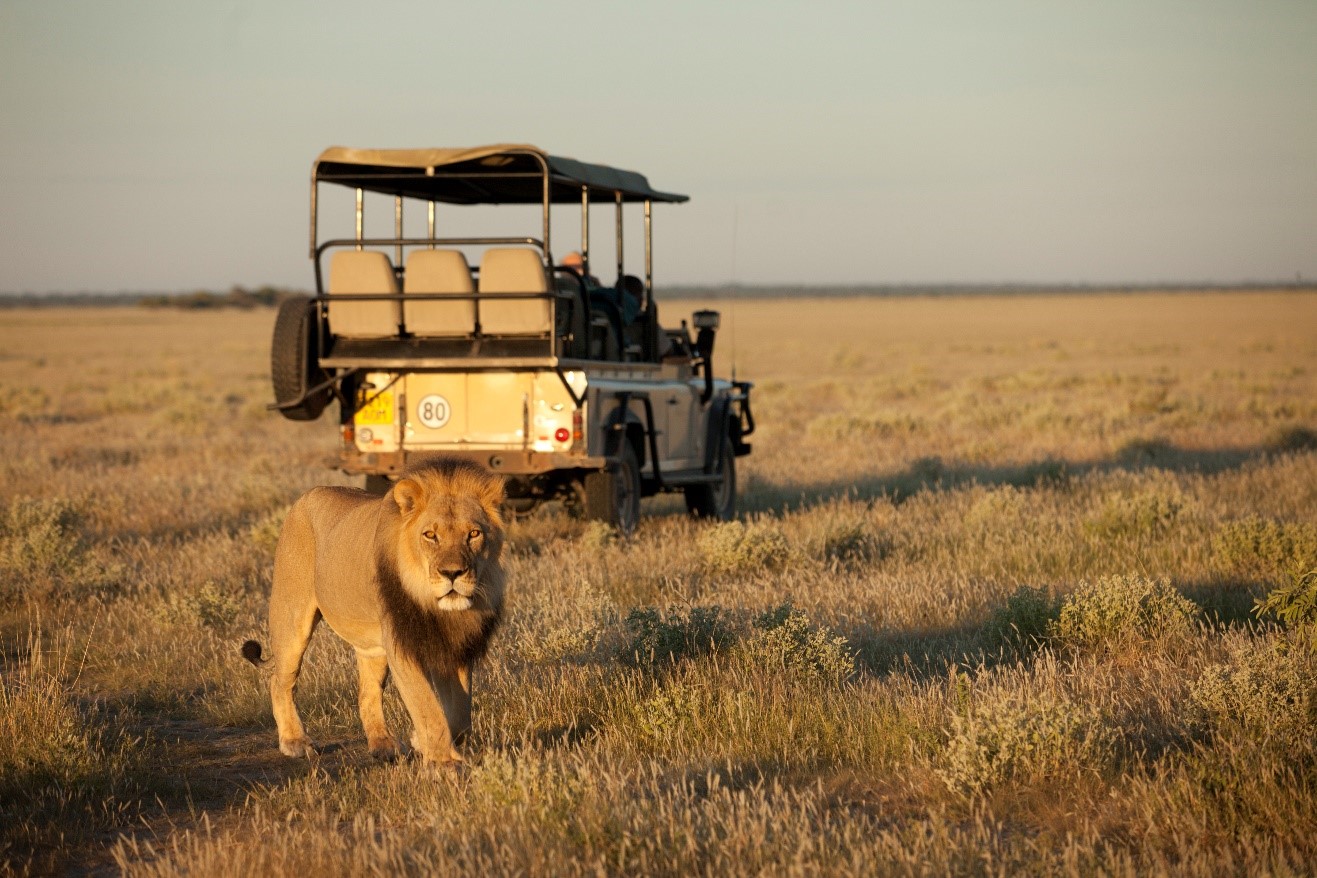
As with all things, there are costs to this. For one, it’s one more thing you have to pack and account for in your luggage size and weight restrictions, of which there are usually at least a few while on safari. It could mean that you have to bring one less lens, or maybe one less outfit (I typically opt for sacrificing extra clothes).
Again, though, if you don’t have a second camera body, or just plain can’t wrap your head around bringing a second one, this may not be for you.
X-factor lenses
My choice “x-factor” lens while on safari is a constantly revolving one. At times, I may recommend a “nifty fifty,” which is a 50mm f/1.4 (or similar) that gives you a unique ULTRA wide aperture for captivating travel photography. Other times, I may recommend a macro lens to use during down time at camp, where you’ll likely be photographing things like people, flowers or small reptiles scurrying about.
However, for today, I really like the idea of the classic 70-200mm f/2.8 as my x-factor lens. Because this is not a critical lens, I can’t quite justify it in my go-to kit. It’s just got a semi-awkward focal range for classic wildlife safaris in Africa. However, when you can use it (e.g., close wildlife), a 200mm focal range with f/2.8 can make for truly sensational photos. It gives you that awesome blurred background, aka bokeh, that so many professional photos inherently have. It also gives you the flexibility to photograph in low light conditions—dawn and dusk.

It’s a bigger lens, so it’s a costly x-factor lens to bring, but there are some considerable merits to having a telephoto with f/2.8 capabilities anytime you’re photographing wildlife.
Flash
I don’t personally recommend bringing a flash, as there just aren’t that many times you’ll use it. You won’t want to use it on wildlife game drives, as it can startle wildlife. Thus, it’s primarily for camp photography and people photography, and personally I ALWAYS go for natural light when I can.
Tripods or camera support systems
I get this question a lot. Should I bring something to brace my lens on, or stabilize my camera while in a safari vehicle? It makes sense, as you are indeed using bigger lenses—and in vehicles that can be quite bouncy! Plus, there are MANY products on the market aimed to convince you that you need one of these. To me, however, they’re not really that necessary.
I personally find that anything attached to my camera is just one more thing to get in the way. I aim to go hand held as much as possible. At times, I’ll wrap a bandana or T-shirt around my lens so I can rest it on a metal seat post or cushion head rest, but that’s about it. I’ve seen folks use a simple monopod just to provide a bit of support when using a big lens all day, but that’s about all I’d recommend. Fancy gadgets like retractable, spring-loaded arms that connect to safari doors or fancy gimbal heads with base platforms just seem to be overkill, and they’ll likely get in the way of a perfect shot or two over the course of your trip.
However, if you have a favorite gadget or technique for using these on safari, please do share in the comments below!
Other accessories
It goes without saying that you ought to pack a couple spare batteries and a couple extra memory cards. Some camps will require that you charge batteries overnight in a communal area, so having extras is nice. And do plan on shooting 500+ photos a day, so plan to bring many gigabytes of memory.
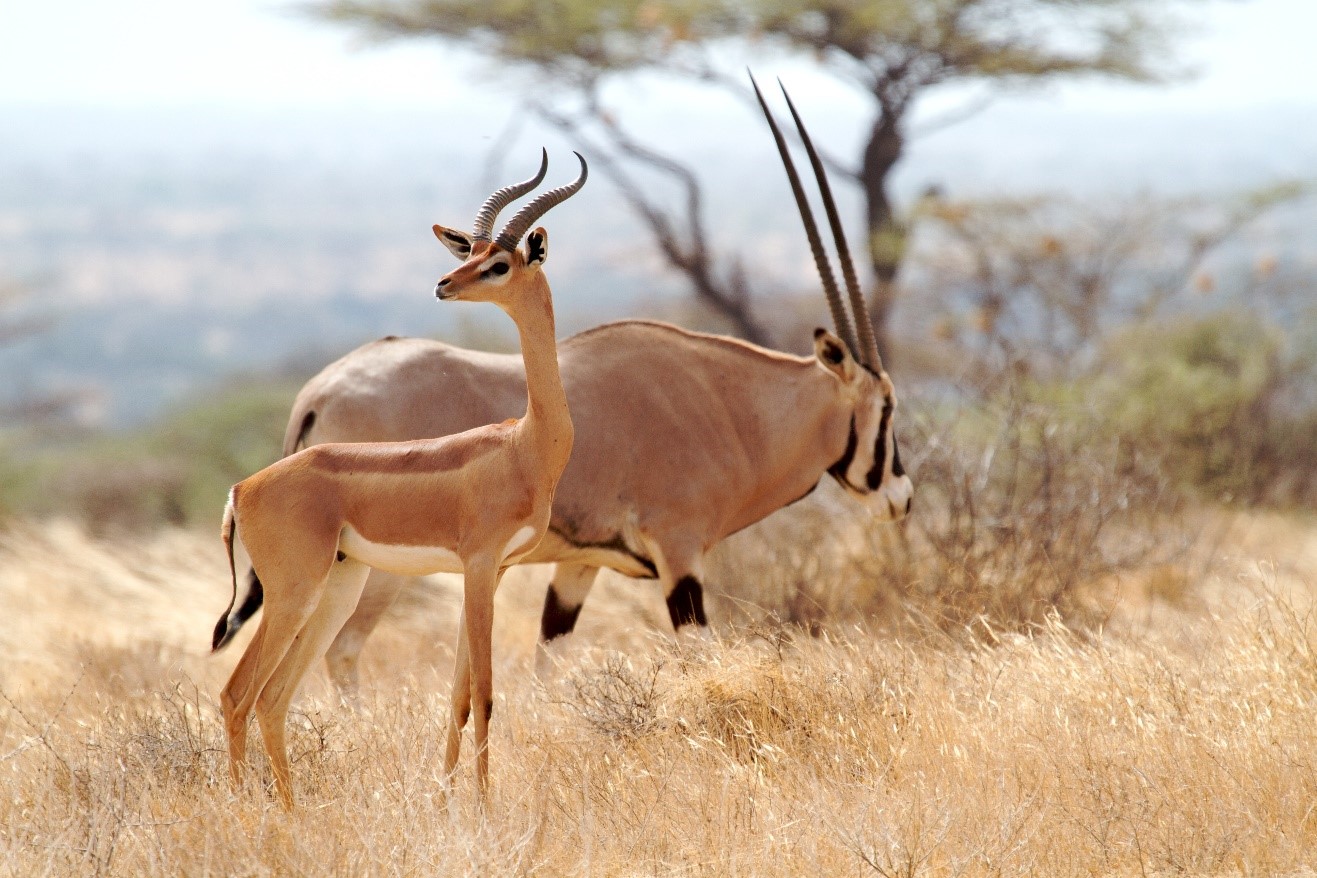
You may also want to consider bringing some camera protection, especially if you’re traveling to Africa in the dry months of June through October, when there tends to be a bit more dust in the air. My go-to is a simple storm shield, which is like a rain jacket for your camera. Not only do these help shield your camera from dust, but if it’s really pouring rain, and you plan on shooting in those conditions, you’ve got yourself some nice water and weather protection, too.
If you’re headed to Africa on a photo safari, lucky you! But even if you’re just dreaming of going one day, it’s never to early to start doing your homework on the best outfitters, as the choice companies often fill up a year or two in advance. Plus, you’ll have all that extra time to look forward to the trip of an absolute lifetime!
Pack like a pro for your next (or first) safari adventure by following these tips:
Cheers, and enjoy,

Court

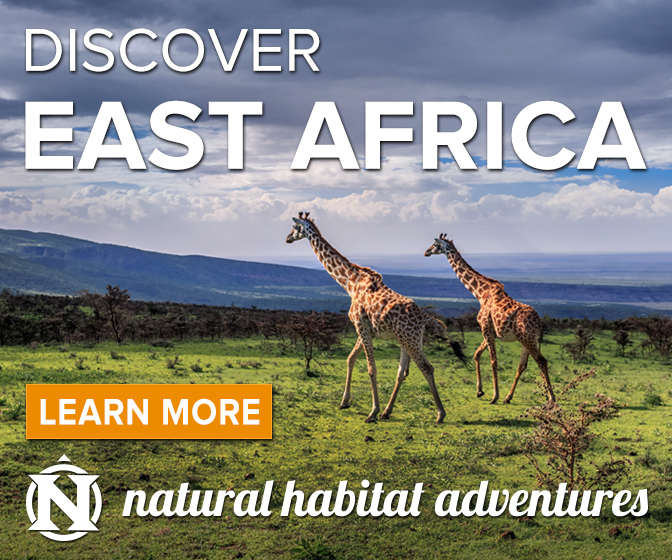
18 Comments

Ray
March 9, 2020 at 11:19 am

Court Whelan, Ph.D.
March 12, 2020 at 2:30 pm

Patrick O'Connor
July 21, 2020 at 11:12 am

Court Whelan, Ph.D.
July 23, 2020 at 7:18 am

Jeffrey Graber
March 12, 2020 at 7:27 am

Court Whelan, Ph.D.
March 12, 2020 at 2:20 pm

Ronald P Wagner
April 4, 2020 at 12:10 pm

Court Whelan, Ph.D.
April 5, 2020 at 8:20 am

Ronald P Wagner
April 13, 2020 at 7:53 am

Court Whelan, Ph.D.
April 15, 2020 at 11:04 am

Bryan Leece
April 8, 2020 at 6:14 pm

Court Whelan, Ph.D.
April 15, 2020 at 11:02 am

Bryan Leece
April 15, 2020 at 5:11 pm

Bryan Leece
June 4, 2020 at 1:20 pm

Steve Boice
May 26, 2021 at 4:29 pm

Court Whelan, Ph.D.
June 2, 2021 at 10:54 am

Skip Saunders
September 19, 2022 at 9:34 am

Court Whelan, Ph.D.
September 20, 2022 at 11:09 am
This May my wife and I will travel to Botswana (Okavango Delta) for our third trip to Africa. Two years ago I upgraded from a Nikon D90 to the D500. Current lenses include a Nikkor 16-35mm 4G, Nikkor 16-80mm 2.8 (kit lens), Nikkor 70-200mm 2.8 and Nikkor 200-500mm. I’m debating whether to bring the second body (D90). Previous photos with the D90 and a Tamron 16-300mm proved to be good but not what I would expect today. My skills and gear have improved in the meantime. So, should I bring along the D90? I am also well aware of the dust issues. Thanks for the informative article Court.
Hi Ray, GREAT question, and one that people often face when bringing a second body–they’ve upgraded, and one camera is superior. In short, I DO suggest you bring your older D90. However, I would of course use your D500 most often. Thus, I usually start out each day with my wildlife zoom telephoto (either 70-200 or 200-500) on the better camera, and put one of your wide angles on the D90. Usually wide angle shots are much more forgiving of fewer pixels, or lower quality, as they’re general travel shots or landscape shots that are a bit more of “documenting the scene” vs. setting up for the landscape photo of a lifetime. And if you DO see one of those shots (which is indeed possible throughout) I take the extra minute to switch lenses to get the best shot, if it’s a truly amazing scene before me. But frankly, it’s the wildlife that i’m always prioritizing, so the telephoto usually stays on the better camera (and I’m not sure if I would actually bring the 16-300 unless you really, really want it…it seems that you’re more than covered in this range with other, better lenses, correct?)
Hope this helps a bit! I hope you really enjoy the adventure!!
If you’re bringing the 16-80, why would you also bring the 16-35, which overlaps the 16-80, both in focal length and aperture??
Hi Patrick,
This is a semi-loaded question :). Technically you wouldn’t not need both lenses. However, oftentimes those lenses with more restricted focal ranges give you a lower f/number, which allows you to photograph in lower light. They are also usually a tad better quality. But on safari, when weight and space are valuable, I wouldn’t overlap in focal ranges if one lens can do it all. Typically I’d bring a 16-35mm plus a 24-105mm, and although there is some overlap, you’d be surprised at the difference between 24mm and 16mm at the wide end…it can make a big difference.
I hope this helps!
Hi!
This is a great presentation and the descriptions of options and why to use or not use certain equipment and when was spot on.
My wife and I just got back from a South African trip and I brought very similar equipment with me.
So great to hear this, Jeffrey! Hope you had an amazing trip–I’m sure you did!
I went to Africa on a photo safari last September. Before leaving, I researched cameras. I wanted something that would be convenient and versatile. I did not want to fiddle with changing lenses. There are severe weight restrictions on many flights in Africa. I settled on a Nikon P900. It basically functions as a point and shoot camera. Optical zoom goes to 2000mm equivalent. Photos are stored in JPEG format. There is also a P1000 model which has a greater zoom equivalent and also stores RAW format. I took over 2200 pictures and for most of them there was sufficient light, even at extended zoom numbers. The camera also has movie capability which I unfortunately did not use enough. I also packed a monopod, but as you pointed out in your article, attachments tend to get in the way in the cramped spaces of safari vehicles.
Hi Ronald, great tips and advice here! These nikons you speak of are amazing cameras, and are helping usher us into a whole new world of photography with these “bridge” cameras. Great to hear from you and thanks for sharing!
I took along 3 batteries,two 64GB memory cards, and a laptop so I could transfer my images to
it at the end of every day.
Another gadget I found handy was a 2 TB WD My Passport Wireless Pro drive. It will
automatically download any memory card you plug into it to the hard drive. It has a built-in
battery so you could even use it out in the field.
https://shop.westerndigital.com/products/portable-drives/wd-my-passport-wireless-pro-hdd?
utm_medium=pdsh2&utm_source=gads&utm_campaign=wd-us-
pla&utm_content=873862296940&utm_term=WDBP2P0020BBK-NESN#WDBP2P0020BBK-NESN
Also, i took a BESTEK Compact Power Strip Travel Cube 3-Outlet and 4 USB Charging Station and
a separate travel plug adapter. Its cube shape easily accommodates those bulky battery
chargers and adds several USB plugs also. You can also take it along in the safari vehicle
and use it when the inverter is running to keep devices charged.
https://www.amazon.com/BESTEK-Mountable-Detachable-Extension-Accessories/dp/B076WP4BQS
wow! thanks for this tip–this new wireless passport drive looks amazing! This in indeed a game changer. Thanks a ton for sharing–I’ll have to put this as part of my core recommendations! Thanks so much, Ronald!
Hi Court. My wife and I really enjoyed the nature Photography 101 and 102 sessions over the past week and we’re looking forward to 103 etc in the weeks to come. We’ve and the privilege of travelling to Africa (Tanzania and Botswana/Namibia) on two occasions over the past 3 years and we’ve loved all. Gear weight is something we struggle with every trip. We certainly travel with 3 bodies between us (one each and a spare) and leaving the spare at home is not an option. Having been on a trip back in the film days when a body failed, we learned that lesson. For us a 500 photo day is a very slow day – especially if you’re shooting action or birds in flight. And as we shoot raw the storage space mounts quickly. Travelling with a computer and saving to external hard drives with that is workable but adds to the weight. We’ve been using hyperdrive colorspace hand-held card readers that save to internal hard drives but they are old and don’t read cards larger than 32 Gb and they won’t read CFast cards at all. Leaving things on the cards themselves doesn’t really work as backup because it’s better to have at least 2 copies of everything just in case. How do you handle backing up in the field?
Hi Bryan, great to read all this–sounds like you’ve had some amazing travel and photo experiences! Typically my go-to when I’m doing A LOT of shooting is a laptop plus external hard drive. As long as my laptop has space, I’ll keep one copy of each photo there, and then another copy on the external hard drives. This allows me to delete my memory cards. Unfortunately space and weight is always a consideration, no matter what trip you’re doing, so 5 pounds of laptop, cables, and small hard drive is 5 pounds fewer clothes, shoes, etc. But fortunately I’ve honed my travel gear to rather light over the years so even on very restrictive 44 pound limits (total) I’m under. This usually means sacrificing a tripod, and definitely only one zoom telephoto. If I’m on a trip with only a 25 pound limit (which I’ve indeed had before), I just bring redundant memory cards and keep everything stored on them. Fortunately my camera body has two slots for two cards, so I can create an instant backup. I hope this helps a little! No real perfect solution, but all dependent upon your gear, and the weight limits (our photo trips fortunately have an extra 15 pounds weight limit we pay in advance for on internal charters). Best of luck, and let me know if you have any follow up questions!
Thanks Court and Thanks Ronald. The WD devices look really interesting and likely to be just what we’re looking for to replace the hyperdrive units we’re using at the moment. So thanks tons for the tip. And like you Court, we pack as light on the clothing as we can and certainly sacrifice that for gear wherever practical. and you know if no one wants to sit beside us on the plane ride home from a trip – well that doesn’t bother us too too much. The gear is the issue, with one lens weighing in at 8.8 lbs, it makes everything else a bit more of a challenge. but leaving it at home is not an option. which is why we’re looking to save as much weight as we can elsewhere in the gear range without compromising the shoot. so thanks so much to both of you.
Just wanted to thank Roland again for the tip about the WD my passport – we ordered one and it’s great. it talks to my tablet and reads all the cards we throw at it. this will be great as it means i don’t have to carry a laptop now and we carry the tablets anyway to tote the books we never have the time or energy to read while we’re travelling. Thanks Roland we would never have come across this solution if you hadn’t mentioned it.
I am planning on going to the Masai Mara in 2022. I will be bringing two full frame bodies. However, since weight is typically a restriction, I would like to get your advice on what lenses to bring. I will be bringing a 24-105 f/4 for landscapes for sure and would like to bring two other lenses.
I have a 70-200 f/2.8, a 200 f/2.8 (prime non Is so it is lightweight) and a 100-400. I also own a 500 f/4 and 1.4x and 2x TCs. I also have the option to rent a 300 f/2.8 or a 400mm f/2.8 while I am there. From those choices, what would you recommend? I love prime lenses but I’m not sure if the 500mm would be too much reach.
Hi Steve, wow these are some good problems to have! All amazing lens choices, and I know you’d be happy with pretty much any combo. What this is going to come down to is bringing as much as you can and then you get to have and not need, instead of need and not have, first and foremost. I am always the guy who brings 40 pounds of camera gear and 4 pounds of clothes to stay at my 44 pound limit. Not knowing the exact weights of each of these lenses, let me take a gander at what might be a reasonable assemblage.
So the 24-105 is of course a must. Plus it’s small and lightweight
If you were definitely not considering the 500 or one of the 3 or 400 primes, I’d say the 100-400mm is a solid choice. I do like the range it gives you…it’s versatile, and relatively small compared to the others. But it’s not as sharp as the primes (the mark 2 is actually fairly close, though) and the aperture isn’t fantastic at 400mm.
To me, a 300m f/2.8 plus tele converters is about the best combo you can have. You aren’t likely to be over-gunned with the 300mm such that you are too close for the shot. But given the sharpness, you can easily crop in during post if you need a little extra and didn’t have time or the desire to put on an extender. Plus, it’s not the biggest lens out there, making travel easier and hand holding easier, too. And with a 1.4x, you are at a 420mm f/4, which is still awesome. And if you have your 2x with you, you are at a 600mm f/5.6, which is still a pretty darn good aperture at that focal length, capable of good bokeh and lower light.
You could technically take the above logic and do the same with the 400mm f/2.8, but a) it’s bigger and heavier and b) you may indeed have too much firepower without bringing a 70-200 f/2.8. Then you are adding even more weight and size. However, a 400 f/2.8 is pretty dreamy…I just wish it was a tad smaller.
A 500mm f/4 is a great safari lens, especially in the sprawling plains of the Mara. You will no doubt use it, but it must be coupled with the 70-200mm f/2.8 in your kit. However, I do love a 70-200mm f/2.8 lens for safari…you’d be surprised how much you may use it…for landscapes, and closer wildlife shots.
So, this is a lot of rambling, I know. I would say that if you want to go the most efficient route, which is probably one of the better photo routes, too, I’d rent the 300mm f/2.8 and bring my 1.4x and 2x extenders. Then the only other lens you’d really need would be the 24-105mm. But it’s a bit of a shame to need to rent a lens if you already have all that you’ve got. You could easily pass on the 300 and instead bring the 24-105, 70-200 and 500 f/4, if you can fit all that and if you are comfy using the 500 f/4 somewhat hand held (or at least balanced on a bean bag or gimbel of sorts.
Gosh, that was a lot thrown at ya…I hope it helps a bit!
In 2005, I went on an African photo safari to the Okavango Delta. I bought a Canon 400mm f4 DO lens to augment my other Canon gear and the 400mm was on the camera body 90% of the time. I was carrying other lenses, of course, but the only one that seemed to make it to the body was the super wide angle lens. Crank the clock ahead 10 years and I’m on a ship north of Svalbard taking pictures of polar bears. I’m standing with a professional photographer who likewise uses Canon gear and likewise is taking pictures of the bears. I notice the ship’s professional photography staff are on the bow with what appear to be much (much much) smaller gear pointing at the same bears we are working. I asked the pro photographer what they expected to get?…. His response surprised me, he said: “you’ll be shocked”. Later that day I saw what they had accomplished. Nearly same as what I captured and similar to the professional’s pictures. I discovered what they were using: Olympus. They used the 300mm f4 with an extender. When I returned to the states I sold all of my Canon gear. Bought Olympus gear (with the same money I received for my used Canon gear) and have not looked back. This past month I was in Southern Africa with another world renowned wildlife photographer. He was using Canon gear but was travelling “light” (as you recommend), with just one modest telephoto zoom and a wide angle lens. I however, using my Olympus gear (which, except for the BWL, fits in my bellypack) was able to take pictures that rivalled anyone else on the trip. The computational photographic capabilities of the Olympus camera exceed those of the traditional full frame cameras and the images produced are remarkable. So, while I not only agree with the advice you provide to travel lightly, I suggest going even further with appropriately flexible lens choices and more capable light weight gear.
hi Skip, great feedback! I have MANY colleagues enamored with Olympus as well. Their capabilities are simply amazing, and to do so with relatively lower weight and cost is just astounding. Thanks for sharing!